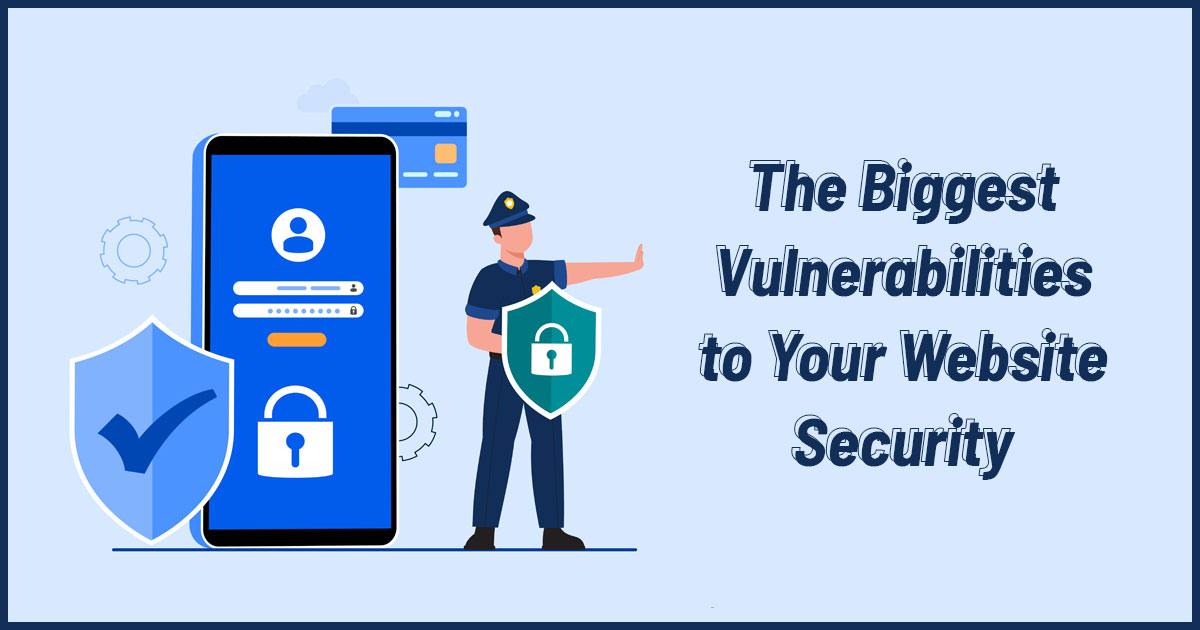Running a modern-day business requires fully functional websites. However, some e-commerce operators make mistakes when designing or developing websites.
This creates loopholes or leaves vulnerabilities that malicious third parties can exploit.One way to prevent this is by obtaining a relevant security certification, such as an IAT certification, which verifies one’s knowledge and expertise in protecting websites and systems from cyber threats.
Understanding the Biggest Vulnerabilities to your Website Security
The number of security breaches has increased over the past two years. There has been a 37% increase in data exploits between 2020 and 2022.
Cybersecurity is even more paramount than before, as hackers devise more ingenious ways to bypass safety measures.
Before ensuring your safety, you must understand the possible threats. Here are some of the biggest vulnerabilities to your website security:
- SQL Injection
- Lack of Proper Data Encryption
- Cross-Site Scripting
- Broken Authentication
SQL Injection Defaults
As the name states, websites whose coding systems are written in SQL and HTML programming languages are the most vulnerable to this threat.
This occurs when the online platform allows input from untrusted sources. This enables hackers to insert malicious code into the server. If the attempt is successful, the cyber-terrorist can steal client data.
Lack of Proper Data Encryption
The proper way of data transfer is that the system encrypts the data gotten from the sender. In turn, the program sends the information to the receiver, who will decrypt it and access its message.
This content flow ensures that only both parties can access the hidden substance.
If the website does not use a secure certificate, the sensitive substance is transferred unsafely, any malicious third party can gain unauthorized access and steal it.
Cross-Site Scripting
With cross-site scripting, the hacker inserts a malicious JavaScript code into the website that sends user cookies to the hacker instead of deleting them.
Unlike injection attacks, cross-site scripting works with flaws within your website and is not limited to SQL websites.
When the user ends their internet session, the third party can access their online account using these details.
Broken Authentication
As mentioned, internet users leave information trails like cookies containing passwords, usernames, and contact details when they surf the internet.
The website usually invalidates the cookies holding information whenever they log out from the web pages.
However, this may only sometimes happen if authentication is broken and the browser is suddenly closed.
Weak Security Architecture
Sometimes, the fault may be negligence in implementing the best cybersecurity practices.
A recent study by Verizon showed that wrong website safety configuration accounted for more than 50% of successful cyberattacks.
The issue ranges from developer error and use of default administrator passwords to a lack of regular security audits. These results in safety loopholes that hackers can exploit.
How to Protect Yourself Against these Cybersecurity Threats
While the security threats may vary, they all show that website owners and administrators contribute to the vulnerabilities.
Most security breaches will not happen without their direct or indirect authorization. As such, taking the necessary measures increases cybersecurity by almost 80%.
Below are some of the ways to reduce the vulnerabilities of your website:
- Only Accept Inputs from Sites with Secure Certificates
- Ensure Proper Monitoring
- Implement Proper Security Frameworks
- Regularly Update Your Security Architecture
Only Accept Inputs from Clients with Secure Certificates
Always validate any data interacting with your website before authorizing it. Verify everything that interacts with your server.
This reduces the chances of being susceptible to injection attacks and cross-site scripting. Do not interact with websites that do not have the “HTTPS” certificate.
Ensure Proper Monitoring and Implement Proper Security Frameworks
Hackers are developing better ways to bypass security. As such, you should also conduct regular cybersecurity audits to ensure your website is secure.
Install and update all firewalls, monitor access management, and upgrade your authentication process. Avoid using components from vulnerable sources. NEVER COPY AND PASTE CODES.
Employ Strict Session Management
For their safety, introduce stringent measures that users must abide by when visiting your website. This includes limiting login attempts after failed trials.
You can also log out users if they stay idle for too long. Introduce passwordless and multifactor authentication.
If you must use a password, be very strict on your requirements and only authorize vital and hard-to-guess phrases.
Always shred virtual data that are not in use anymore. Do not store session ID cookies for longer than necessary.
Ensure Maximum Device Security
Do not ignore the security of devices you use in accessing your website admin page simply because you have a secure server.
From your personal computer to mobile devices, ensure that they are safe enough to access the backend.
Install Clario, Norton, Avast, and other software packages to protect your machine against user-centered attacks like phishing. For mobile devices, use this code to check if your phone is hacked.
Conclusion
For the most part, cybersecurity failure is caused by the human factor. This is why web developers and administrators must tighten every loophole, from the server to end-point devices.
If the people involved can get it right, web users will access the internet securely. A single successful security exploit can damage a brand and ruin a business. This is why websites need to ensure that their platforms are as safe as possible at all times.


